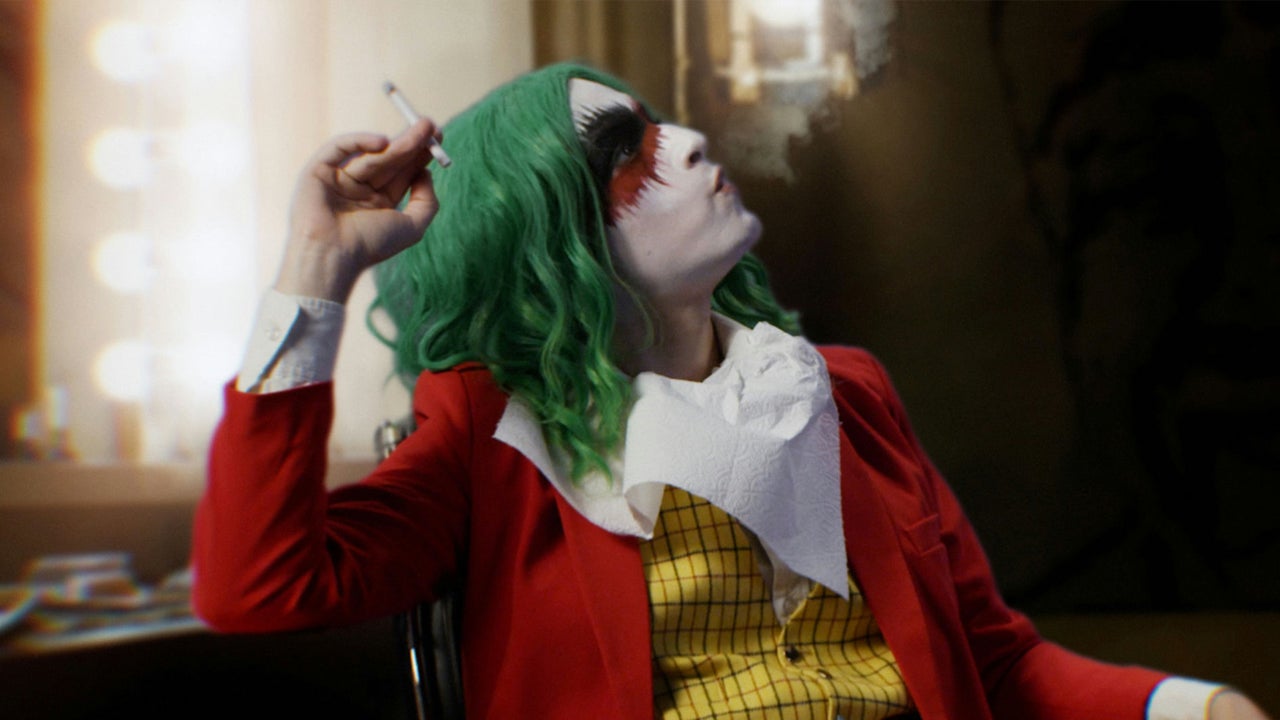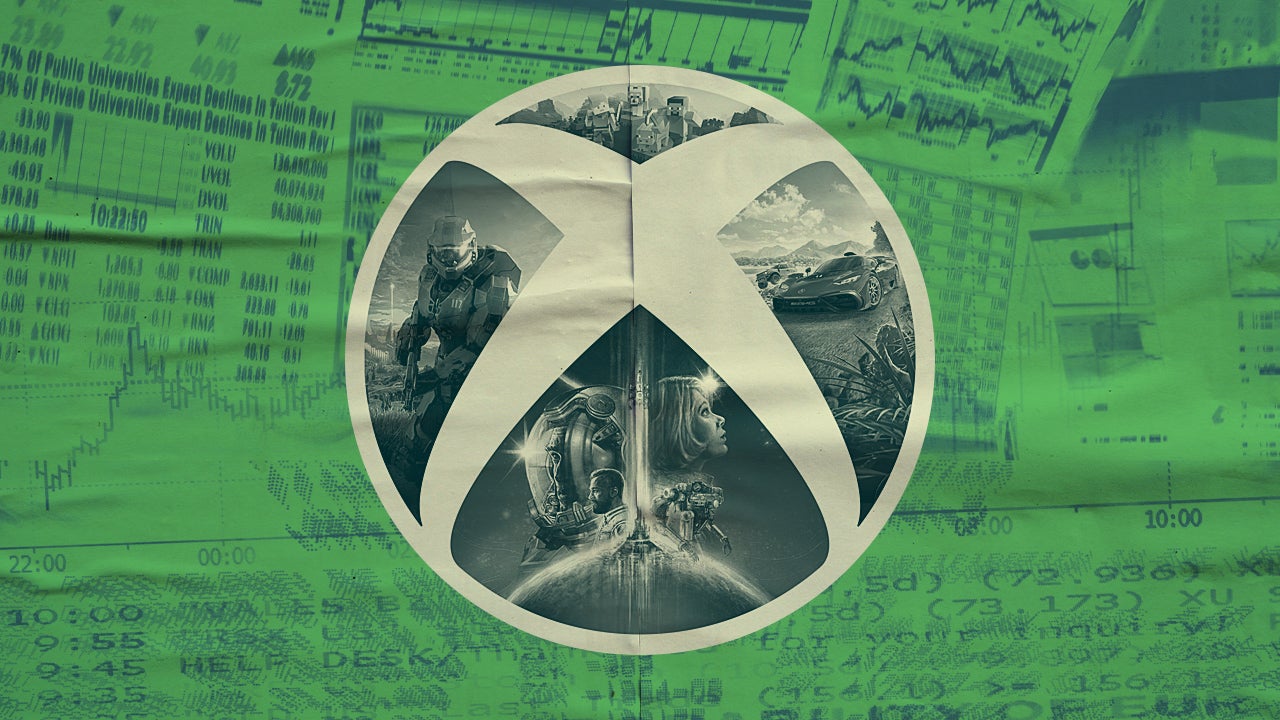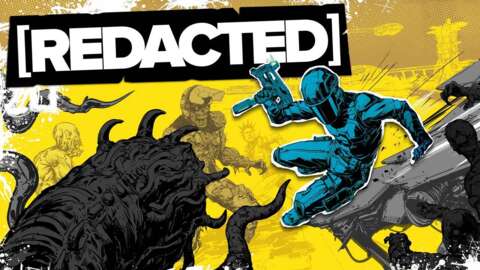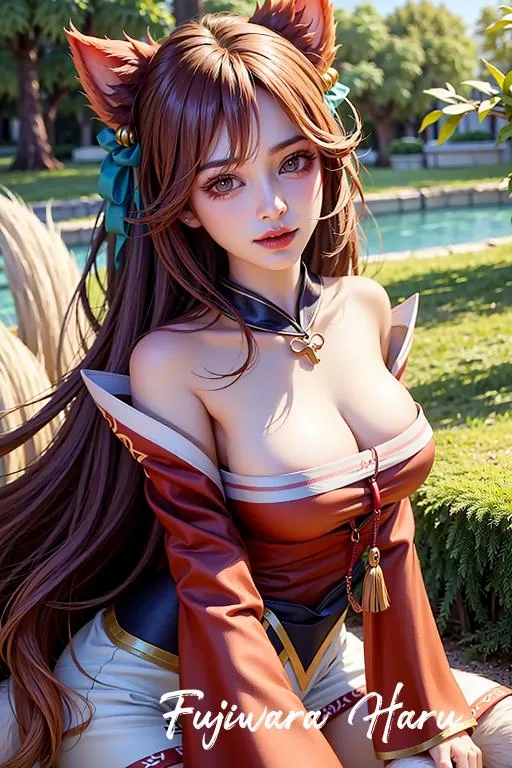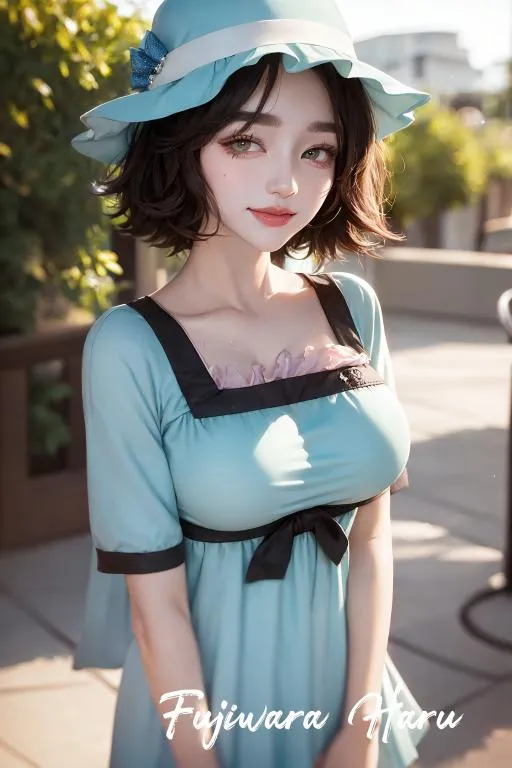The first words we hear from Vera Drew in The People’s Joker are “As far back as I could remember, I always wanted to be a Joker.” It’s a play on the opening line of Martin Scorsese’s Goodfellas – but writer, director, and star Drew is also riffing on the way Todd Phillips’ Joker aped Scorsese’s The King of Comedy. The visual presentation, with Drew wearing an outfit similar to one of Joaquin Phoenix’s Joker getups, is also a deliberate reference, which, of course, traces back to a supervillain who’s been around for more than 80 years. That this list of gags and allusions could go on for an eternity, rolling up a katamari of artifacts from the intersecting histories of film, comedy, and comics, is a testament to how loaded The People’s Joker is. If Phillips’ Joker felt like a work desperate to separate itself from the mythology of Batman’s greatest nemesis, Drew’s film is all too happy to remind you that it is as much about the lore of every copyright-skirting character onscreen as it is its own unique work.
And what a distinct film it is, showing how Joker the Harlequin (played by Drew herself) got to where they are now: on the verge of hosting UCB Live, a hybrid stand-in for comedy institutions Saturday Night Live and Upright Citizens Brigade. Though this sounds like a relatively straightforward journey, one that explicitly mimics that of Arthur Fleck, The People’s Joker complicates expectations by dropping a trans coming-of-age tale into a handcrafted version of the DC Comics sandbox. After all, this Joker starts off as a depressed kid in Smallville, – hooked on Smylex (the references just keep piling up) thanks to a mother who worries about them saying they were “born in the wrong body.” The character moves to Gotham and becomes the leader of an “anti-comedy” troupe in the face of rejection from a status quo that sees room for funny men (“Jokers”) and funny women (“Harlequins”) but nothing in between. As absurd as it might sound, Drew and co-writer Bri LaRose are simply following in the footsteps of anyone who’s ever told a Batman story – though, blessedly, without the consent of the publisher who’s drawn some strict boundaries for what does and does not constitute a Batman story.
To dive into The People’s Joker isn’t to try and tear apart where it begins as a “trans coming-of-age narrative” and where it ends as an “anti-comedy parody of Joker.” It’s about embracing both halves. It can be both because any character from these worlds can represent both – and the movie is better for it. For all the discussion of how comic books are our “modern mythology,” the people behind The People’s Joker seem to be the first to keenly understand exactly how that should translate into cinema. They treat the history and imagery of established brands and people – actual Saturday Night Live impresario Lorne Michaels, but also Jared Leto’s interpretation of the Joker – like toys to be played with rather than collector’s items for displaying in a limited set of corporate-approved poses. It is, to some extent, glorified fanfiction, framing something deeply personal within characters and storylines familiar to millions.
Consider the omnipresent voiceover in which Joker discusses her life in Gotham and how her fraught identity developed. The narration verges on memoir, Drew speaking from her experience of being trans and working in comedy – there’s a comfort in the way The People’s Joker both embraces and criticizes these defining attributes of its story, and it’s audible in Drew’s line delivery. At the same time, the narration can be imagined like a text box above a comic panel, casually guiding the viewer along and tossing aside jokes at every turn.
The aesthetic shifts that The People's Joker undergoes are sometimes whiplash-inducing, but no different than the blend of styles, experience, and technique you might find when jumping from one issue of a comic to the next. Right up front, the film notes that it was put together by “Vera Drew and a team of over 100 artists on three separate continents during the Covid-19 pandemic.” That abundance is obvious from just how many art styles are featured. (To name a few: puppetry, animated interludes, and jarring CGI characters like a robotic, genderqueer Poison Ivy.) This approach isn’t too far removed from the crowdsourced collaborations of Shrek Retold or Our RoboCop remake – only this time there’s no direct adaptation. That contrast is enlightening, further proving there’s no right or wrong way to tell a superhero story while still expressing a vision that belongs to The People's Joker and The People's Joker alone.
There's a sense that Drew and her collaborators have come to pay homage as well as deconstruct Gotham and its denizens into something just barely recognizable. The film has a particular affinity for DC “villains” who complicate morality, whether that’s David Liebe Hart’s compelling depiction of Ra’s al Ghul as both mentor and monster, or Ember Knight’s delightful, and relatively wholesome, play on Mister Mxyzptlk and their brand of interdimensional magic. Nearly all of the characters, save for some frivolous cameos, are designed to play into the duality that exists in all of us. Life, like the most exciting comics, is a lot more nuanced than just “good” and “bad,” and The People’s Joker resists those labels too. It’s a work of art that’s as garish as it is beautiful, as insane as it is sensible, as Joker as it is Harley Quinn, and as willing to throw its audience into a vat of estrogen as it is ready to embrace them for the people they truly are.
